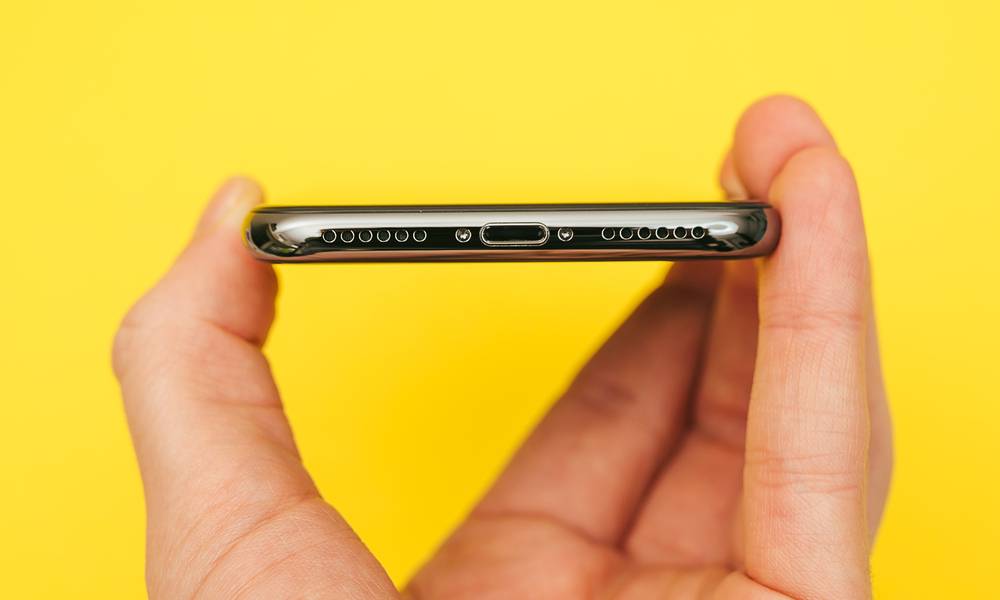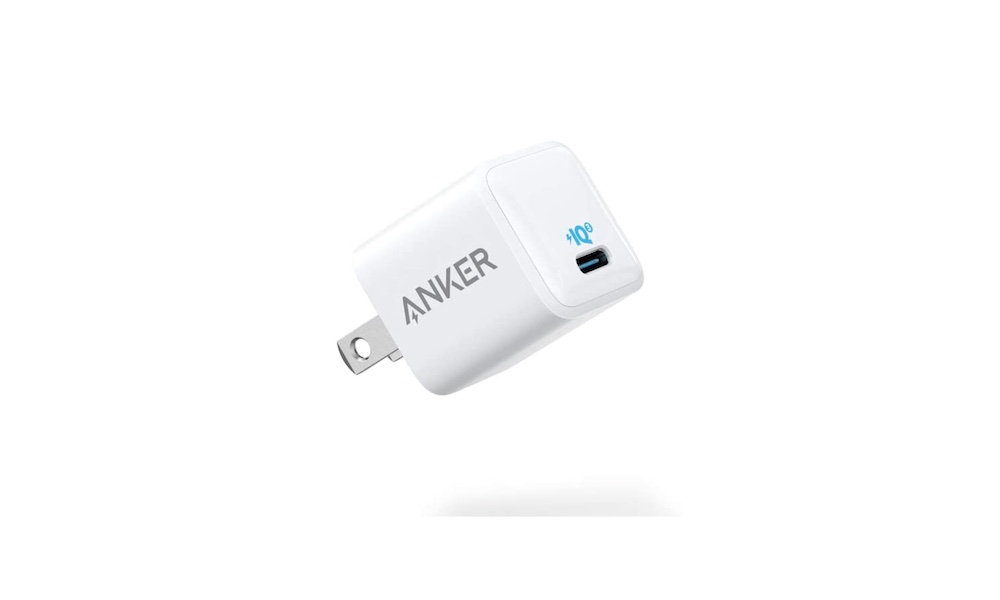European Union Becomes Forceful in Mandating USB-C for iPhone, But Apple May Just Ditch Ports Entirely
 Credit: A. Aleksandravicius / Shutterstock
Credit: A. Aleksandravicius / Shutterstock
Toggle Dark Mode
Following news last month that the European Commission is finally preparing legislation to force a common charging standard for mobile devices, the final standard now appears to be in place, and to nobody’s surprise, it’s going to be USB-C.
While the European Parliament has been debating this issue for years, it finally decided to put its foot down in 2019, with a parliamentary resolution that directed the Commission to adopt new mandatory rules within a few months. While the original deadline of July 2020 was extended as a result of the COVID-19 pandemic, the issue remained on the table, and now the Commission is ready to roll out the new rules for all mobile devices sold within the EU’s member countries.
The new proposal, which was announced by the Commission earlier today, is also a bit more forceful than we had originally expected. Not only does it mandate USB-C as the common standard for almost all mobile electronic devices, but it’s also giving manufacturers only 24 months to comply.
USB-C will become the standard port for all smartphones, tablets, cameras, headphones, portable speakers and handheld videogame consoles.
European Commission
Despite Apple’s strong-willed adherence to Lightning on most of its mobile devices, it does appear that the iPhone maker was ahead of the curve in at least one area: taking the iPhone chargers out of the box.
Although Brazilian regulators still think the charger is an ‘essential part’ of the iPhone, it seems the European Commission disagrees, and the new rules will actually force ALL mobile device makers to stop bundling chargers with their products.
In addition, the Commission proposes to unbundle the sale of chargers from the sale of electronic devices. This will improve consumers’ convenience and reduce the environmental footprint associated with the production and disposal of chargers, thereby supporting the green and digital transitions.
European Commission
The Commission also tacitly supports Apple’s reasons for removing chargers last year, stating that the new rules are intended to help the environment by encouraging customers to reuse chargers they already have and thereby reducing the number of chargers that are being needlessly disposed of — or even simply left kicking around in people’s basements.
Reducing production and disposal of new chargers is estimated to reduce the amount of electronic waste by almost a thousand tonnes’ yearly.
European Commission
After all, even if you never throw away a single charger, it’s needlessly wasteful for Apple and other companies to produce chargers that aren’t ever going to be used — and these surplus chargers will still end up in landfills eventually.
The Commission is also proposing that fast charging technology be standardized “to ensure that charging speed is the same when using any compatible charger for a device.” This will likely spell the death of proprietary technologies like Qualcomm’s Quick Charge (QC) and Samsung’s Fast Adaptive Fast Charging (AFC) in favour of USB Power Delivery (USB-PD), which is already part of the open USB-C standard.
USB-PD is what Apple already uses for fast charging (albeit over the Lightning port), and newer Samsung and QC 4+ compatible devices also support USB-PD alongside their own proprietary standards.
While the European Commission is taking a more heavy-handed approach, it’s clearly grown tired of simply asking nicely and hoping companies will fall into line. The EU published common standards back in 2010, and it hoped companies would voluntarily comply with them.
European consumers were frustrated long enough about incompatible chargers piling up in their drawers. We gave industry plenty of time to come up with their own solutions, now time is ripe for legislative action for a common charger.
Margrethe Vestager, Executive Vice-President for a Europe fit for the Digital Age
Apple signed on right away to this original “voluntary memorandum of understanding,” but also felt that there was enough wiggle room to let it avoid switching the iPhone to micro USB (which was the common standard back then); instead, Apple came up with a $19 Lightning to Micro USB Adapter.
Years of working with industry on a voluntary approach already brought down the number of mobile phone chargers from 30 to 3 within the last decade, but could not deliver a complete solution
European Commission
What’s Apple’s Next Move?
The new proposal sounds like it won’t give Apple nearly the same amount of latitude this time around. It clearly says, “the standard port,” which suggests the physical port directly on the hardware.
That said, Apple still has one card to play if it wants to avoid USB-C: it can ditch the wired port entirely.
While the Commission is supposedly working to standardize wireless charging as well, today’s proposals only cover wired charging, and The Verge confirmed with the Commission that the new rules don’t require devices to have a USB-C port, they merely say that if it has a charging port, that port must be USB-C.
So, if Apple were to simply shift over to an entirely wireless and portless iPhone, it could avoid this whole mess altogether.
We’ve heard enough rumours over the years to know that Apple has at least been considering this, but it all comes down to whether Apple will be ready to mark that move by the time the “iPhone 16” is released in 2024.
It also seems unlikely that Apple could get away with using an iPad-like Smart Connector, as some reports have suggested, since this would still technically be considered “wired” charging. Such a completely proprietary charging accessory would also almost certainly run afoul of the spirit of the Commission’s rules, even if Apple could find a way to make it technically comply with the letter of the law.
There’s actually every reason to believe that Apple already has a design for a completely wireless iPhone ready to go — Ming-Chi Kuo said as much two years ago — but has decided that the world simply isn’t ready for it yet.
After all, there are still features like CarPlay that Apple hasn’t fully addressed, and while wireless CarPlay is starting to catch on, it will likely be 5–10 years before it’s even close to being a standard on all vehicles.
Ultimately, however, the arrival of MagSafe on the iPhone 12 lineup last year seems like it’s a big step in the direction of a fully wireless iPhone, since it has the potential to address aspects that pure Qi chargers can’t, such as wireless data transfer.
While the European Commission may eventually come up with a mandate for standardized wireless charging accessories, it could be some time before that happens, particularly since it’s not a big priority, since almost all chargers already use the Qi Wireless Charging standard to provide at least basic charging speeds. Further, depending on what form the Commission’s eventual regulations take, Apple may not need to make any changes at all, since MagSafe is Qi-compatible at its core.
In fact, it’s important to keep in mind that even today’s proposal only covers charging — it makes no mention of a common port or standard for data transfer. Any legislation on wireless chargers is likely to follow the same lines, which would mean that Apple’s MagSafe chargers can still include proprietary Apple-specific communication features as long as they support the Qi standard for wireless charging.
Today’s announcement is simply the proposal for the changes, which form part of the EU’s Radio Equipment Directive. These will still need to be adopted by the European Parliament and the Council, although considering that the original 2019 resolution directing the Commission to come up with this proposal passed with an overwhelming 582-40 vote, this vote is likely to be little more than a formality.
Once adopted, manufacturers will have 24 months to comply with the new regulations for any new products that are released. With the rules not even yet in force, however, Apple will be in the clear on making any changes until at least 2024 when the “iPhone 16” is on deck. This gives Apple plenty of time to consider its options and prepare the world for the first fully wireless iPhone.








